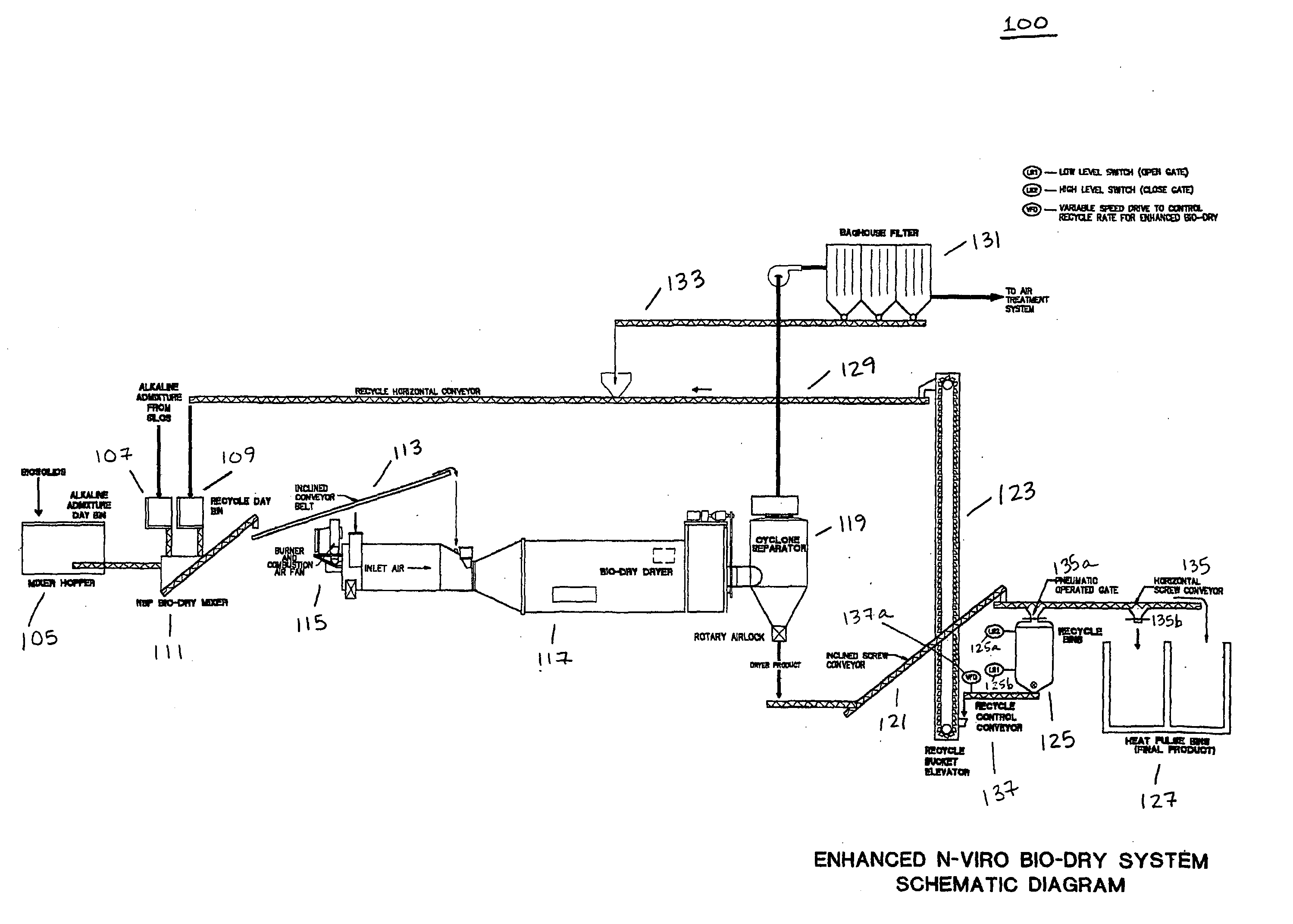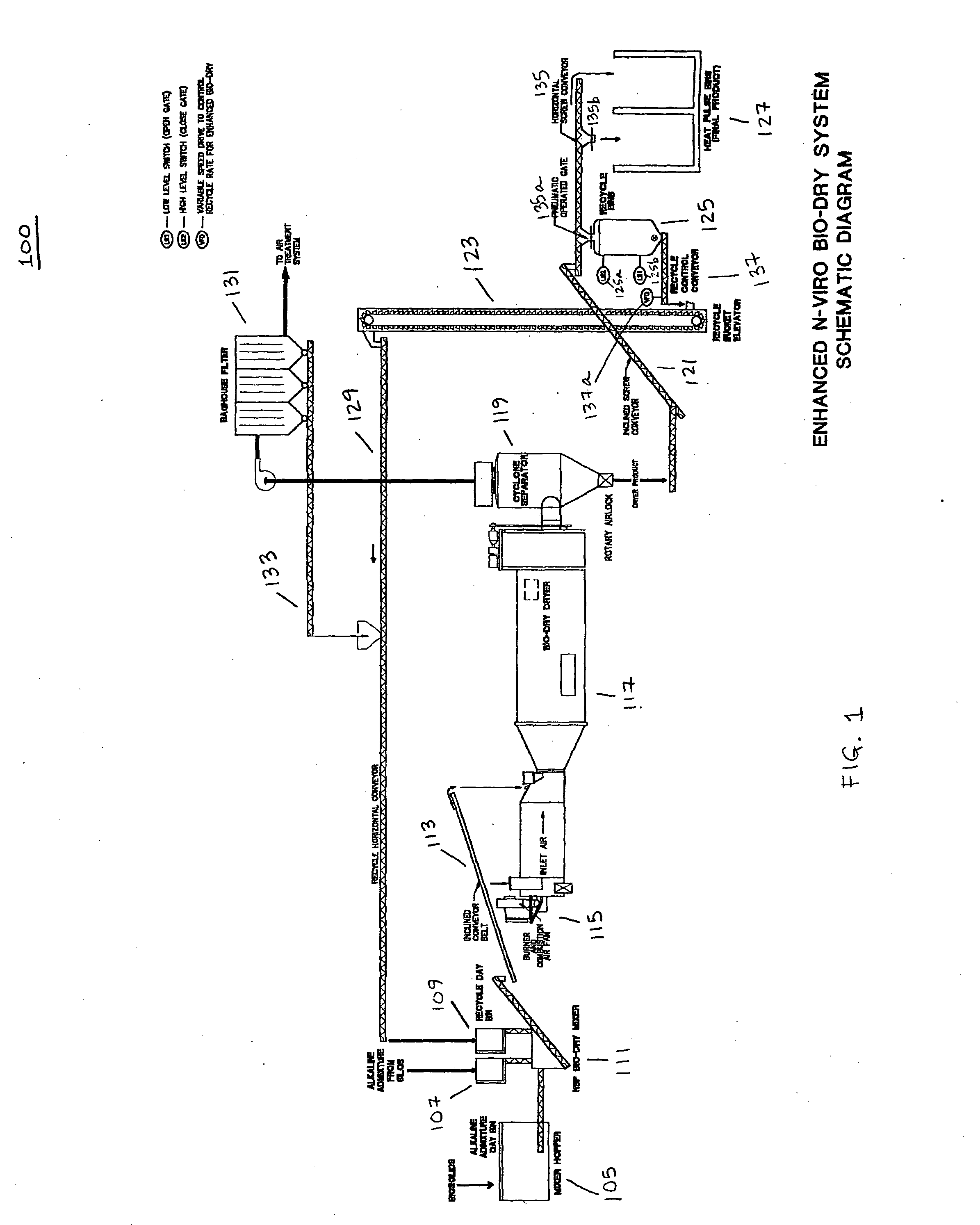Method and system for treating sludge using recycle
a technology of sludge and recycle, applied in the direction of biological water/sewage treatment, water/sewage treatment by neutralisation, water treatment parameter control, etc., can solve the problems of reducing the amount of alkaline material handled, killing nearly all bacteria both undesirable and desirable, and microbially restricted sludge losing the significant fertility value associated with bioactivity, etc., to reduce the amount of expensive alkaline material, reduce the amount of energy needed, and reduce the amount of product handled
- Summary
- Abstract
- Description
- Claims
- Application Information
AI Technical Summary
Benefits of technology
Problems solved by technology
Method used
Image
Examples
Embodiment Construction
[0022] Embodiments of this invention relate to a method and system for using recycled dried sludge mixture to treat bioorganic, organic, wastewater and / or sewage sludge. The method and system may be designed to detoxify, stabilize and beneficiate the sludge by reducing its pathogen levels so that the treated sludge product can be safely used as a soil addition or applied as a fertilizer in agriculture, for example. The use of recycle may advantageously reduce the amount of alkaline material to be mixed with the untreated sludge and, hence, the amount of final treated sludge product made, more effectively capture sludge particulates from the system exhaust gas stream, reduce the amount of energy needed to dry and / or pasteurize the sludge mixture, and increase the flexibility in final treated sludge product characteristics.
[0023]FIG. 1 shows an overall system schematic for reducing the pathogen levels in bioorganic, organic, wastewater, and / or sewage sludge according to embodiments o...
PUM
| Property | Measurement | Unit |
|---|---|---|
| temperature | aaaaa | aaaaa |
| temperature | aaaaa | aaaaa |
| dry weight | aaaaa | aaaaa |
Abstract
Description
Claims
Application Information
 Login to View More
Login to View More - R&D
- Intellectual Property
- Life Sciences
- Materials
- Tech Scout
- Unparalleled Data Quality
- Higher Quality Content
- 60% Fewer Hallucinations
Browse by: Latest US Patents, China's latest patents, Technical Efficacy Thesaurus, Application Domain, Technology Topic, Popular Technical Reports.
© 2025 PatSnap. All rights reserved.Legal|Privacy policy|Modern Slavery Act Transparency Statement|Sitemap|About US| Contact US: help@patsnap.com


